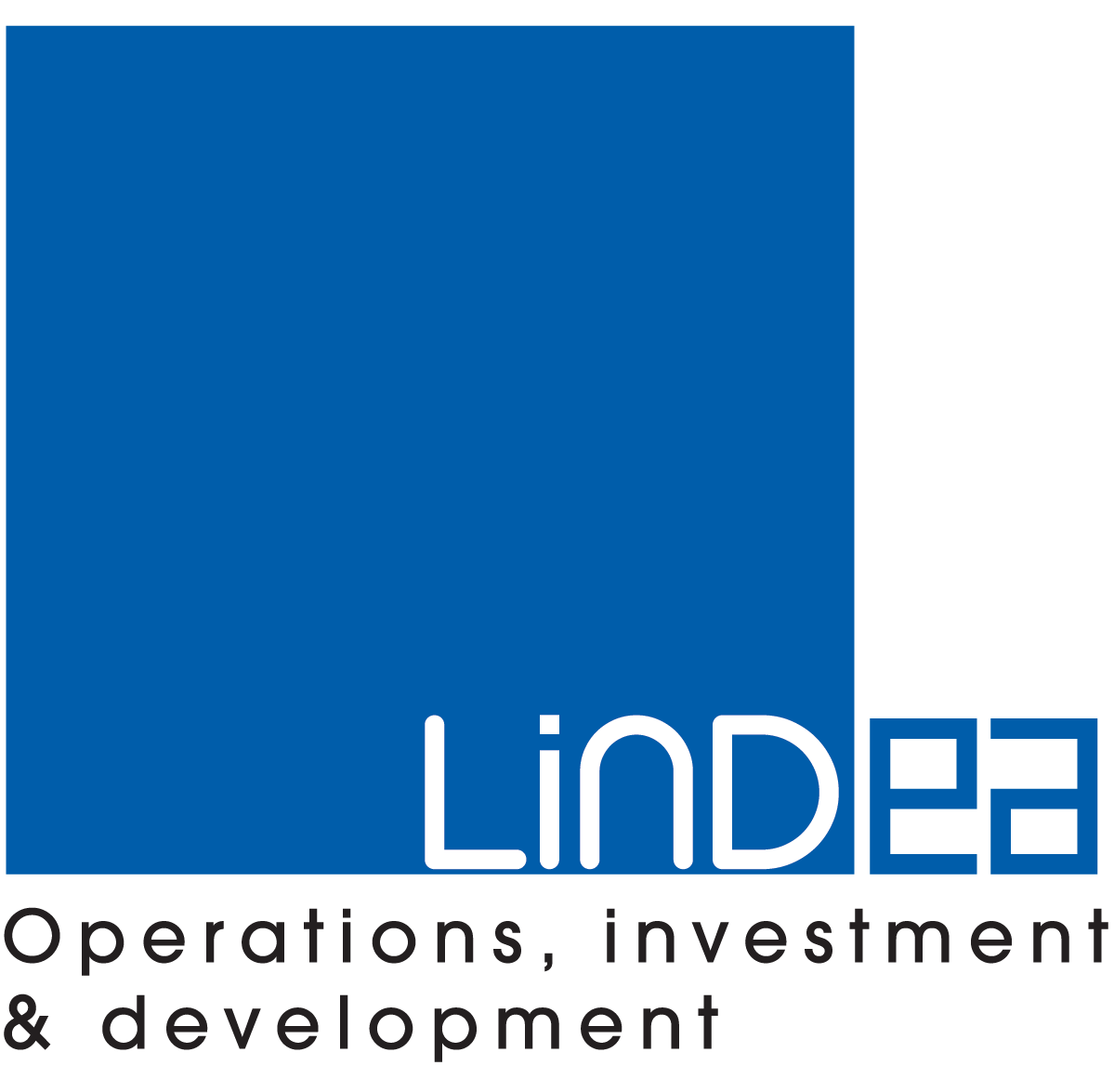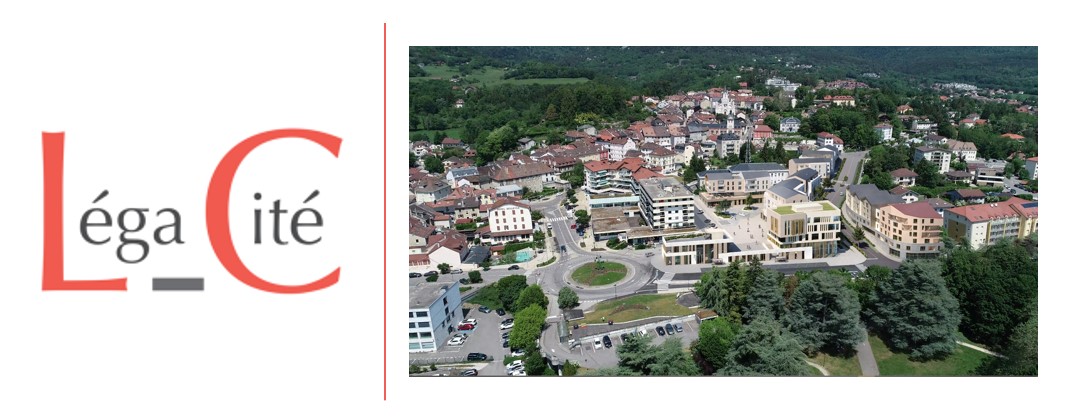The interview is supplemented by illustrations of joint initiatives between Léga-Cité and Lindea.
Adaptation of businesses and work organizations to the new post-lockdown situation and promotion of the human quality of work:
How has the episode we have collectively experienced in 2020-2021 reinforced or, on the contrary, changed your practices, the way you support your private and public clients, and possibly the organization of your firm?
The firm (https://www.lega-cite.fr/),which now has 32 employees, had to adapt like all companies by rolling out remote working across all positions. The transition was relatively quick and easy, as we had decided six months before the crisis to trial remote working as an alternative human resources management tool. Our IT tools were already in place, with remote access to our management software. Remote working will remain a permanent feature at the firm.
Like all companies, we have increased the number of video conferences to move projects forward and continue to assist our clients in our advisory role, which represents a significant part of the firm’s business. Here too, this way of working will remain in place, as it has highlighted the unnecessary nature of a number of physical meetings that required travel time and were not essential.
As for the firm’s litigation activity, it came to a standstill during the first lockdown, as the courts were closed. This further increased the backlog of cases awaiting processing by the courts. The first lockdown demonstrated one thing: justice is an essential public service and the courts cannot remain closed. At the very least, a thorough IT upgrade of the courts is necessary.
Regeneration and revitalization of conventional and innovative real estate and economic activities in the regions:
As someone involved in setting up and developing real estate and urban projects, you contribute to the modernization and transformation of real estate and economic activities in a variety of sectors. Can you give some examples of operations in which this important issue has been addressed with particularly appropriate legal solutions?
As the firm is bound by professional secrecy, it is obviously not possible to refer to specific examples. In general, the firm is involved in a large number of development projects through the ZAC (joint development zone) or PUP (public urban planning) tools. However, it is also involved in numerous projects to convert former industrial and polluted sites into collective housing. Given the scarcity of land, we are also seeing building elevation projects, major renovations of existing buildings, and demolition and reconstruction projects. One concept is becoming increasingly popular: building reversibility, which raises legal and technical issues that are far from simple. Transitional urban planning is also developing significantly in a “win-win” deal for local authorities and project developers.
More generally, what is your analysis of the French landscape in terms of the renewal of real estate practices and urban project management?
At this stage, I don’t see any significant renewal in real estate practices. Or if there is, it is forced and has limited effect for the moment.
When it comes to urban project management, it’s different. Local authorities are key players, and elections, particularly municipal elections, have a huge influence on how projects are managed. Today, beyond the arrival of “green” majorities in a number of municipalities, there is a strong tendency for municipalities to want to limit the density of projects of any kind. This inevitably complicates partnerships with private actors and makes it increasingly difficult to reconcile public and private interests.
Lindea operates in environments where the role of EPAs and EPFs, the evolution of SPLs, the professionalization of urban planning with new PLUs, etc. are changing the role of public actors, whether in their supervisory or operational capacity, along with participatory projects, cooperative housing, the very principle of the PUP, etc. But in any case, the proliferation of regulations and their complexity are obviously not conducive to smooth project management. One thing is certain: without political will, projects will not move forward.
Coordinated and collaborative development and real estate initiatives: the success of a coordinated initiative could increasingly be measured by the realism of its objectives and resources, as well as its ability to offer flexible and scalable solutions that are compatible with urban constraints, quality of life (including for commercial and non-residential projects), and environmental preservation.
In your line of work, you are regularly involved in project consultation, both with public authorities and private operators. How important are these criteria in your work, and are there appropriate legal tools available?
In urban planning and development law, consultation is a well-known and codified mechanism, whether in the Urban Planning Code or the Environmental Code. The tools are therefore in place. Moreover, consultation can be a process that can be developed outside any legal framework, as an innovative mode of project management.
While consultation is well known to public actors, who have long used it in procedures for revising urban planning documents or establishing joint development zones (ZACs), it is clearly not part of the culture of private real estate actors. This contributes to my earlier observation about the lack of innovation in real estate practices. However, it is true that consultation extends project timelines and does not guarantee that there will be no appeals once administrative approvals have been obtained.
In Gex, for example, the consultation process set up for the Cœur de Ville project facilitated the modification of urban planning regulations and their acceptance by the population.
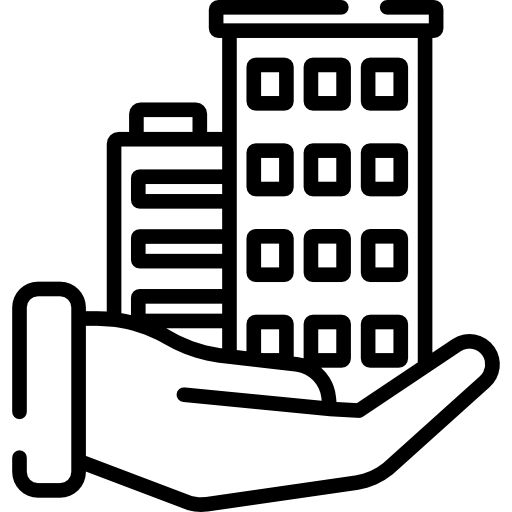
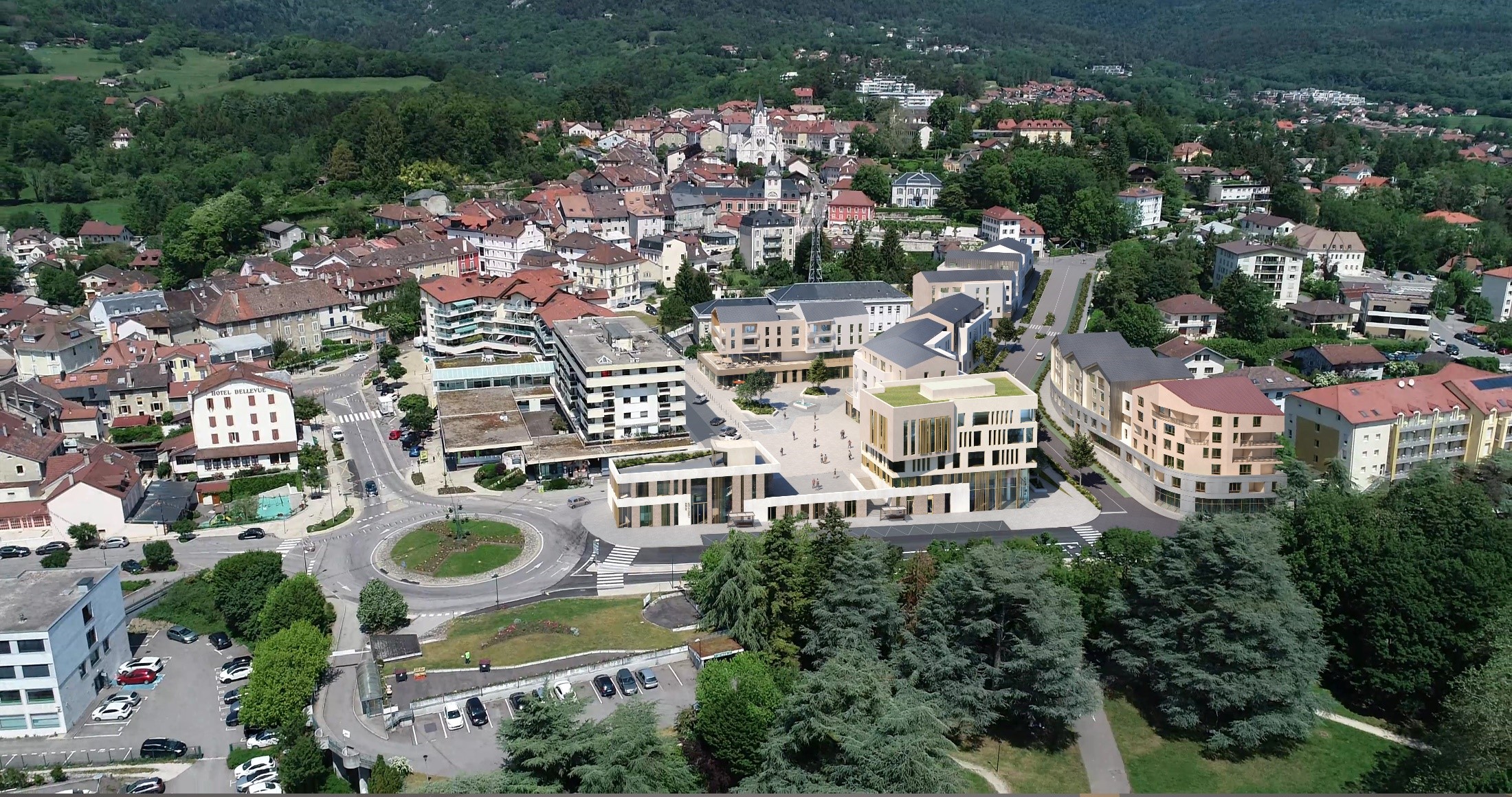
@Duval / AA Group, Cœur de Ville project – Gex
In particular, in your advisory role, what changes have you observed in the management of issues and requirements related to water, wildlife, protection against industrial risks, and transportation in order to ensure the success of urbanization or renewal projects?
The stakes are high, but the integration of environmental concerns into project management is an additional factor of complexity that is sometimes poorly understood or not sufficiently anticipated by project leaders. The risks are multiplied if they are not properly understood. Furthermore, the logic of compensation that currently prevails alongside avoidance and reduction measures is one that is likely to quickly reach its limits given the increasing scarcity of available land.
Upstream project analyses are essential, as we have had the opportunity to conduct with Lindea, whether in the context of the disposal of decommissioned hospital land (such as in Besançon) or the implementation of development operations (Gare District in Divonne-les-Bains or Cœur de Ville in Gex), at the stage of reflection and decision-making regarding investments or urban planning. These analyses incorporate environmental considerations within a multi-dimensional approach, giving them equal importance alongside the definition of needs and technical, legal, and economic assessments.
Overall, these analyses are now imperative for projects involving more than 5 hectares or 10,000 m² of floor area.
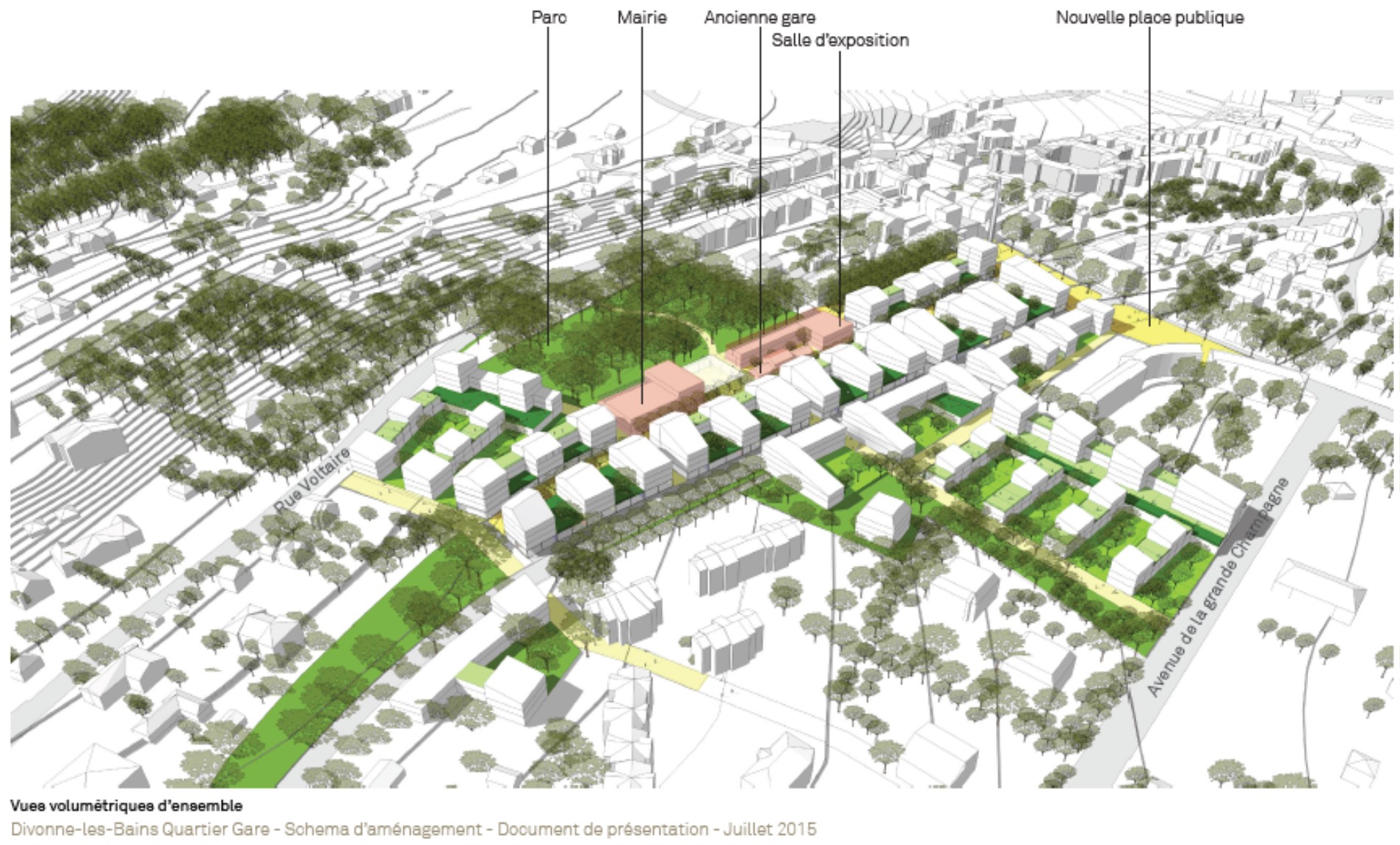
@ANMA, Projet quartier de la Gare – Divonne-les-Bains
Promote responsible financial and real estate investments that support sustainability and both economic and environmental performance:
What are the practical realities and upcoming trends in the investment choices of your private clients, in urban management by local authorities, and overall, in the execution of real estate projects?
As I mentioned earlier, local authorities are generally concerned today with limiting densification within their territories. Additionally, they are increasingly relying—particularly through the PUP (Urban Partnership Project)—on private funding for public facilities, which are often outdated or insufficient.
Moreover, with the proliferation of OAPs (Orientations d’Aménagement et de Programmation), they now have access to a subjective urban planning tool that frequently allows them to constrain projects, as urban planning in France is fundamentally a negotiated process (whether we like it or not).
Private stakeholders—at least those known to the firm, namely property developers—are being seriously challenged by these dynamics and may be led to reconsider “high-risk” land acquisitions.
Overall, the execution of real estate projects has only grown more complex and now requires, more than ever, the ability to coordinate and manage the various players involved in the building process, with a focus on versatility and multidisciplinarity.
From an economic standpoint—for developers, local authorities, and especially occupants—it remains to be seen whether the Bail Réel Solidaire, following in the footsteps of long-term leaseholds such as emphyteutic leases or construction leases, will help contain prices.

Your insights on the handling of the four themes we have just discussed in the previous questions, within the scope of assignments you have carried out:
In projects that are particularly environmentally and socially responsible, or in urban renewal operations, or in the development of peri-urban business parks?
As I mentioned earlier, the proliferation and complexity of regulations are clearly not conducive to streamlined project management, although the intent behind recent provisions—aiming for greater sustainability and better impact management—is understandable.
One example: the firm assisted a project owner in the rehabilitation of an existing business park located in the heart of the city. Even in this case, it was not easy to convince public stakeholders, particularly the State, of the lack of necessity for an environmental assessment, despite the coherence and continuity between the site’s past and future uses.
As for urban renewal operations—without going into detail or breaching professional confidentiality—these are long-term undertakings (at least 5 to 10 years) that evolve according to shifts in political direction, whether carried out within the framework of a ZAC or not, and even when based on simple PUPs. One noteworthy point: for public stakeholders, the ZAC is not considered an outdated tool, and it appears that the PUP has shown its limitations for a number of local authorities, as it is not truly an urban development tool but rather a mechanism for financing public infrastructure.
pictogrammes : flaticon
